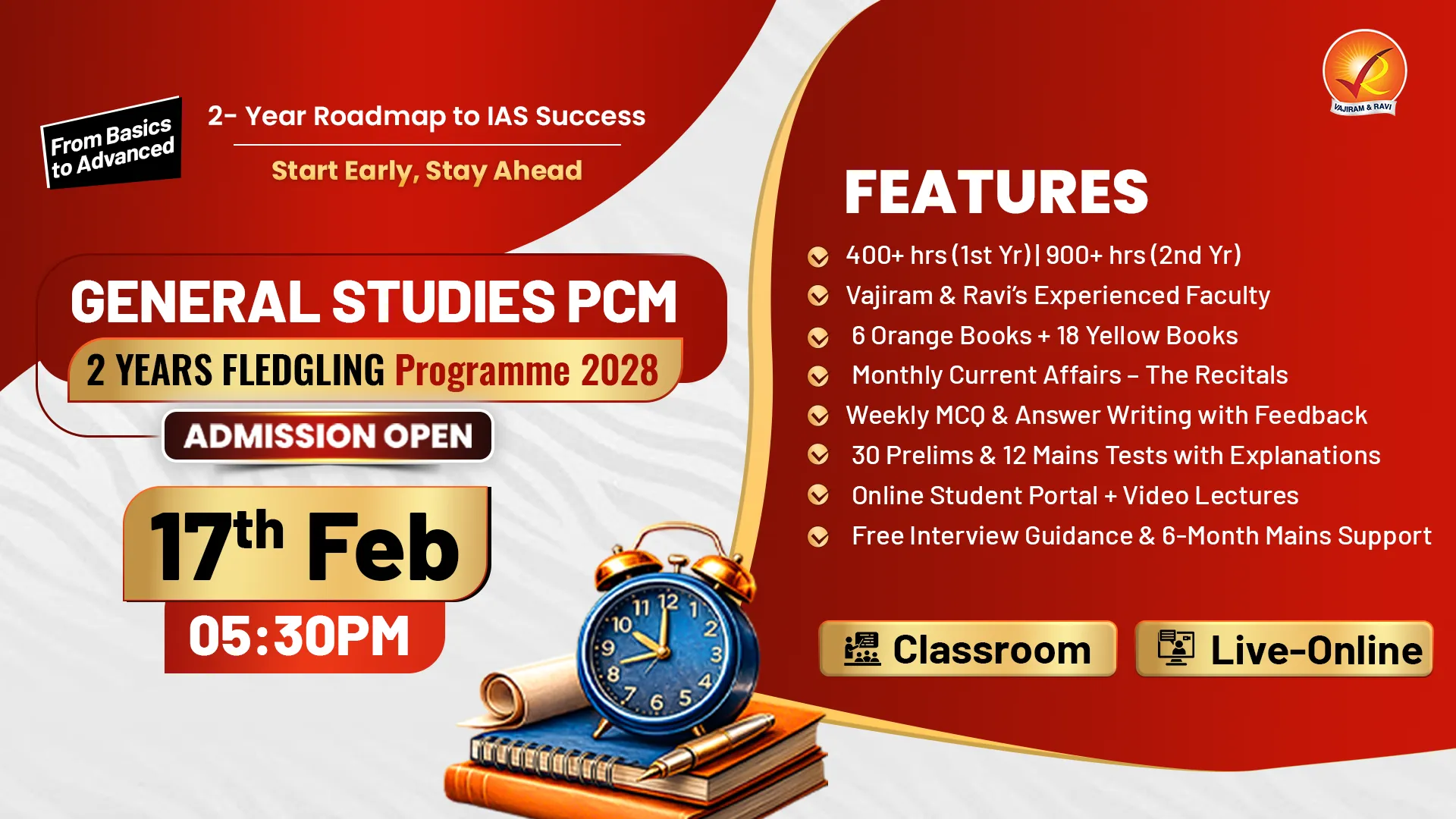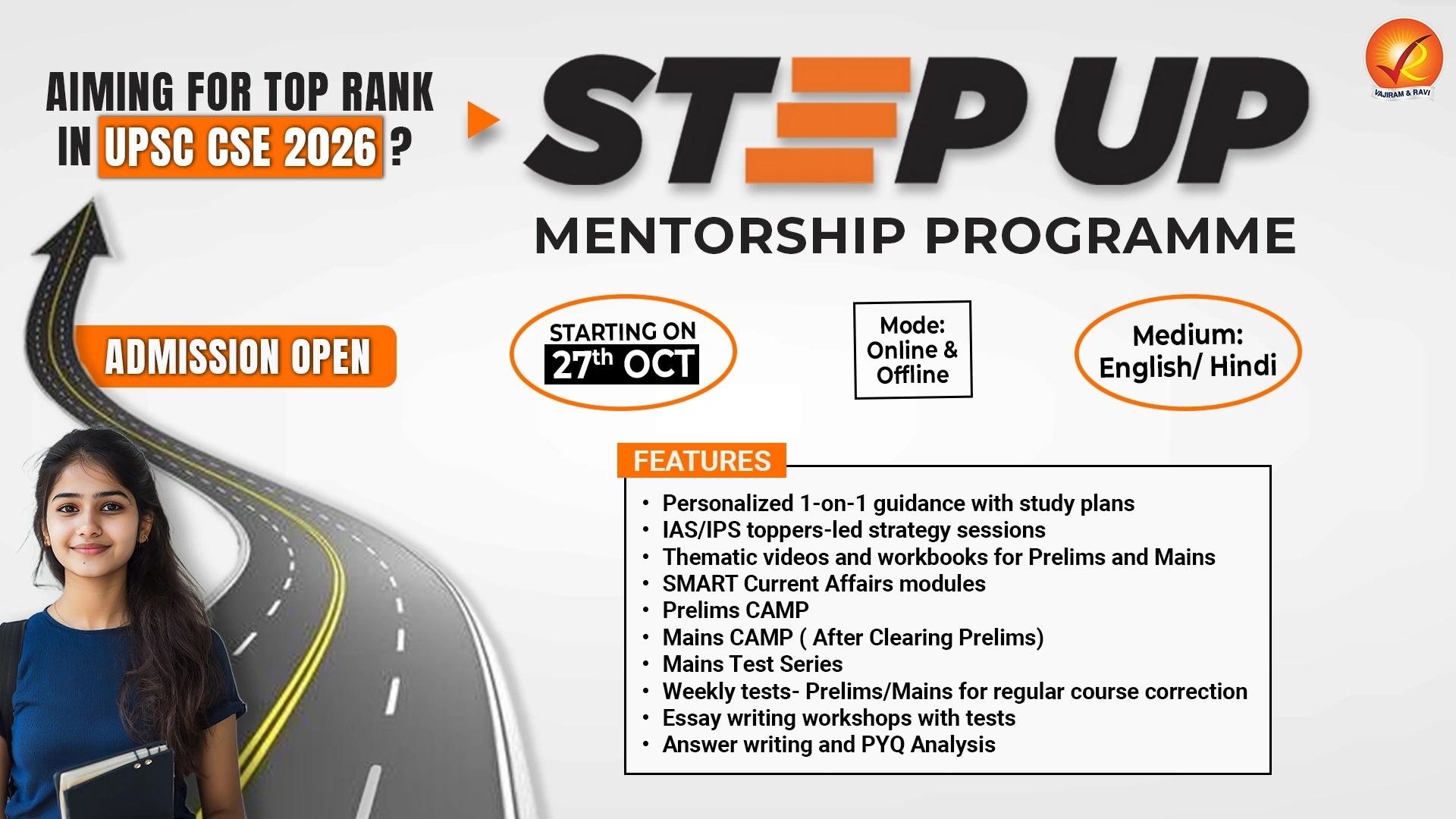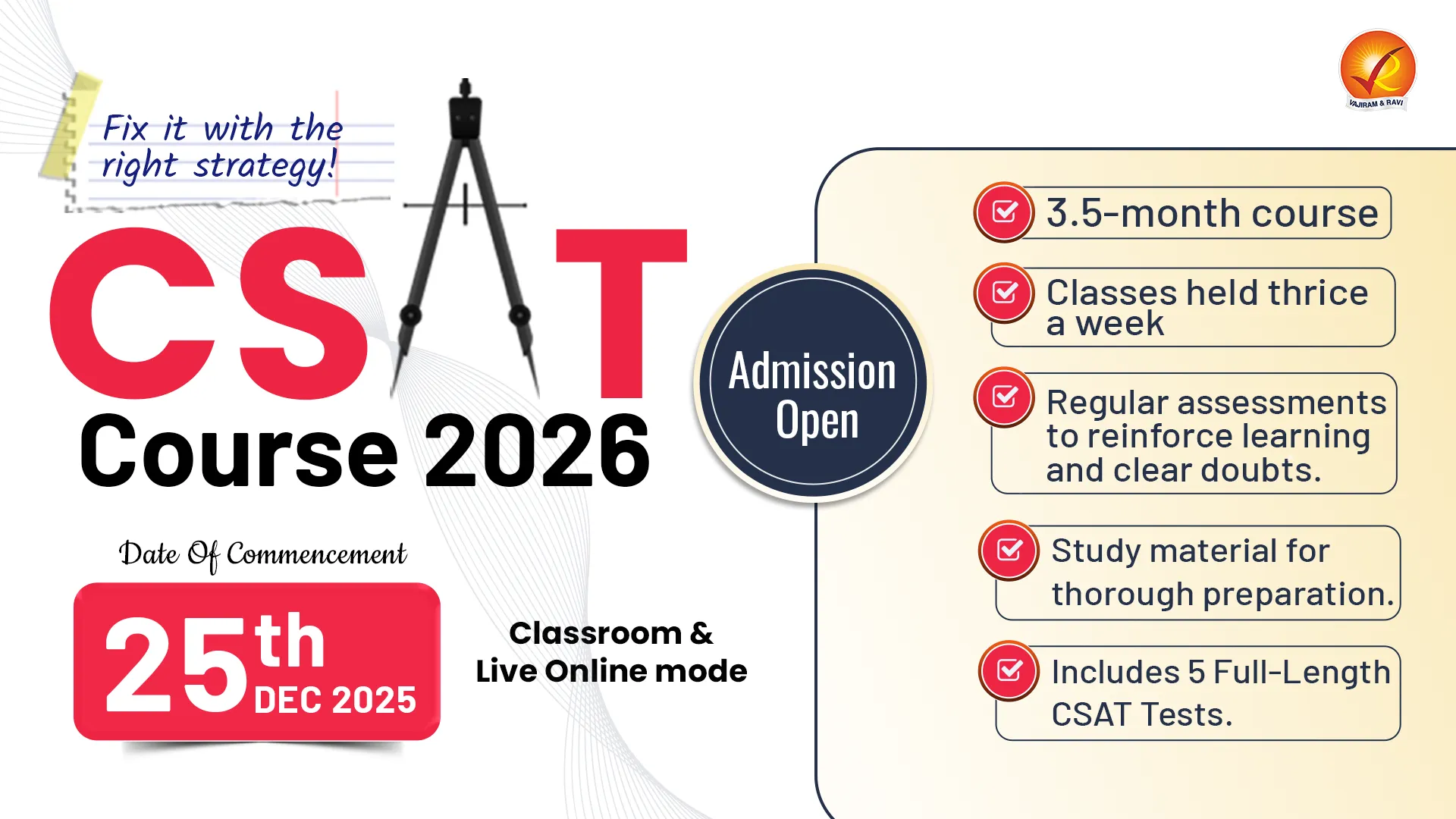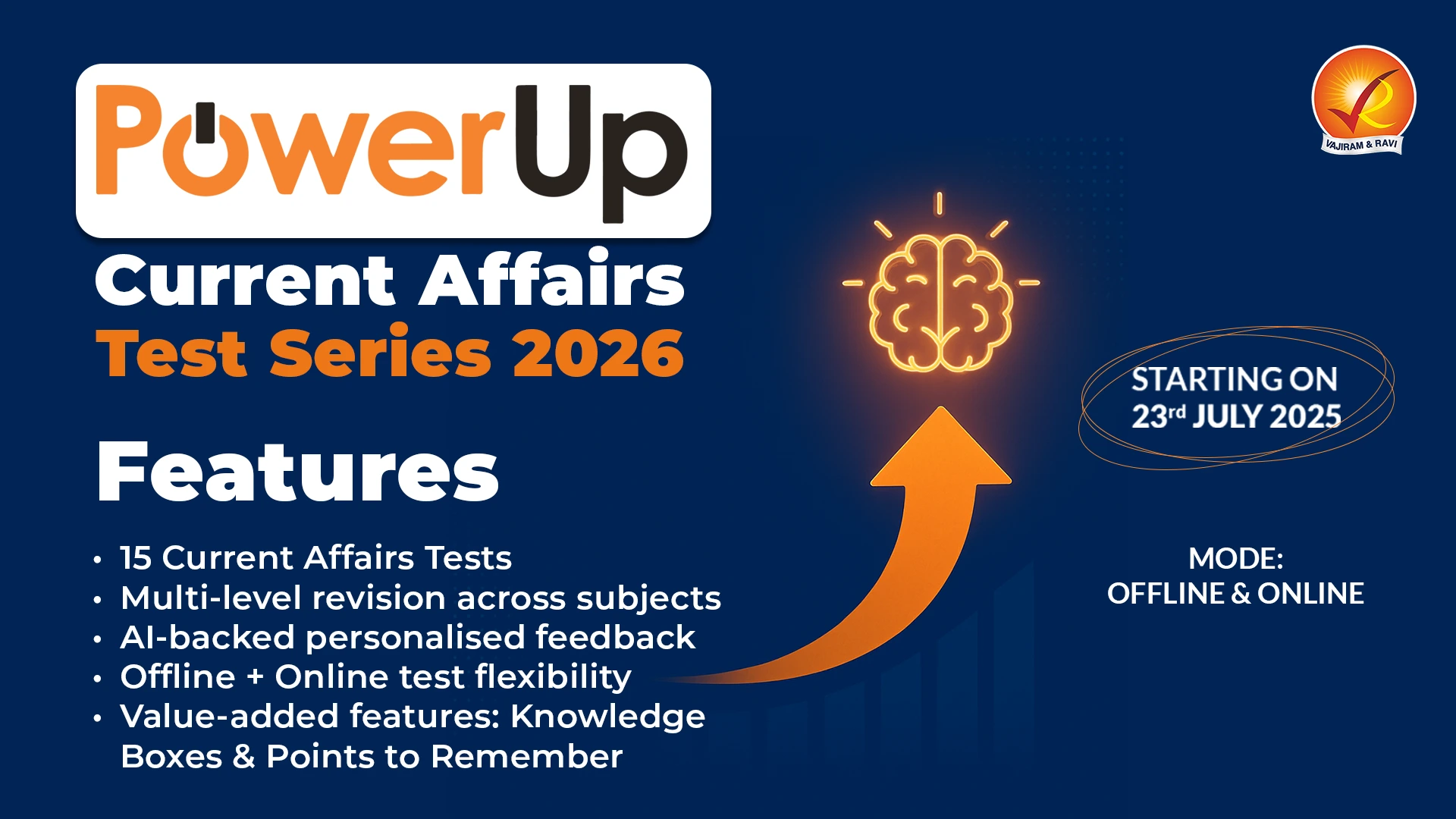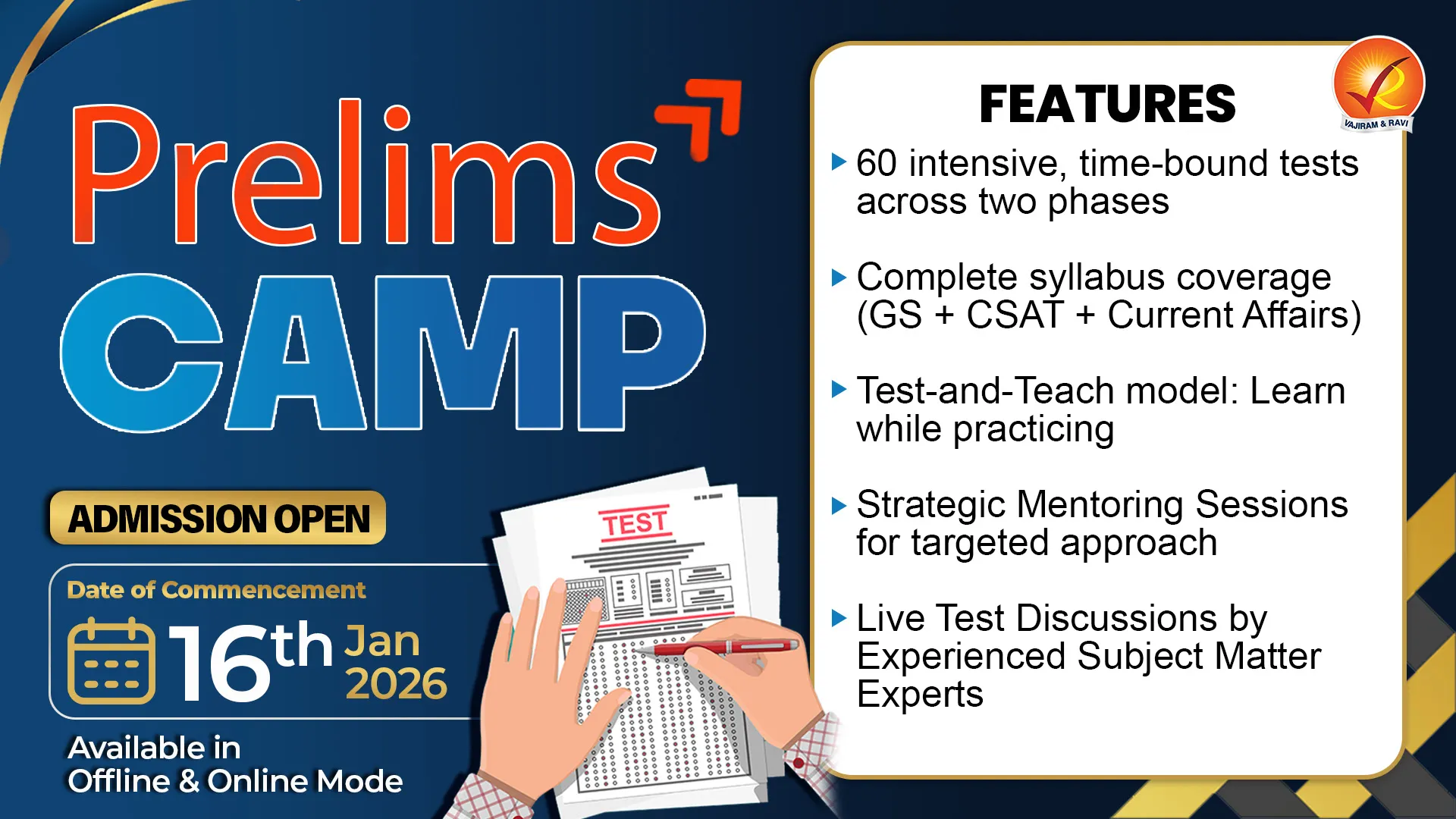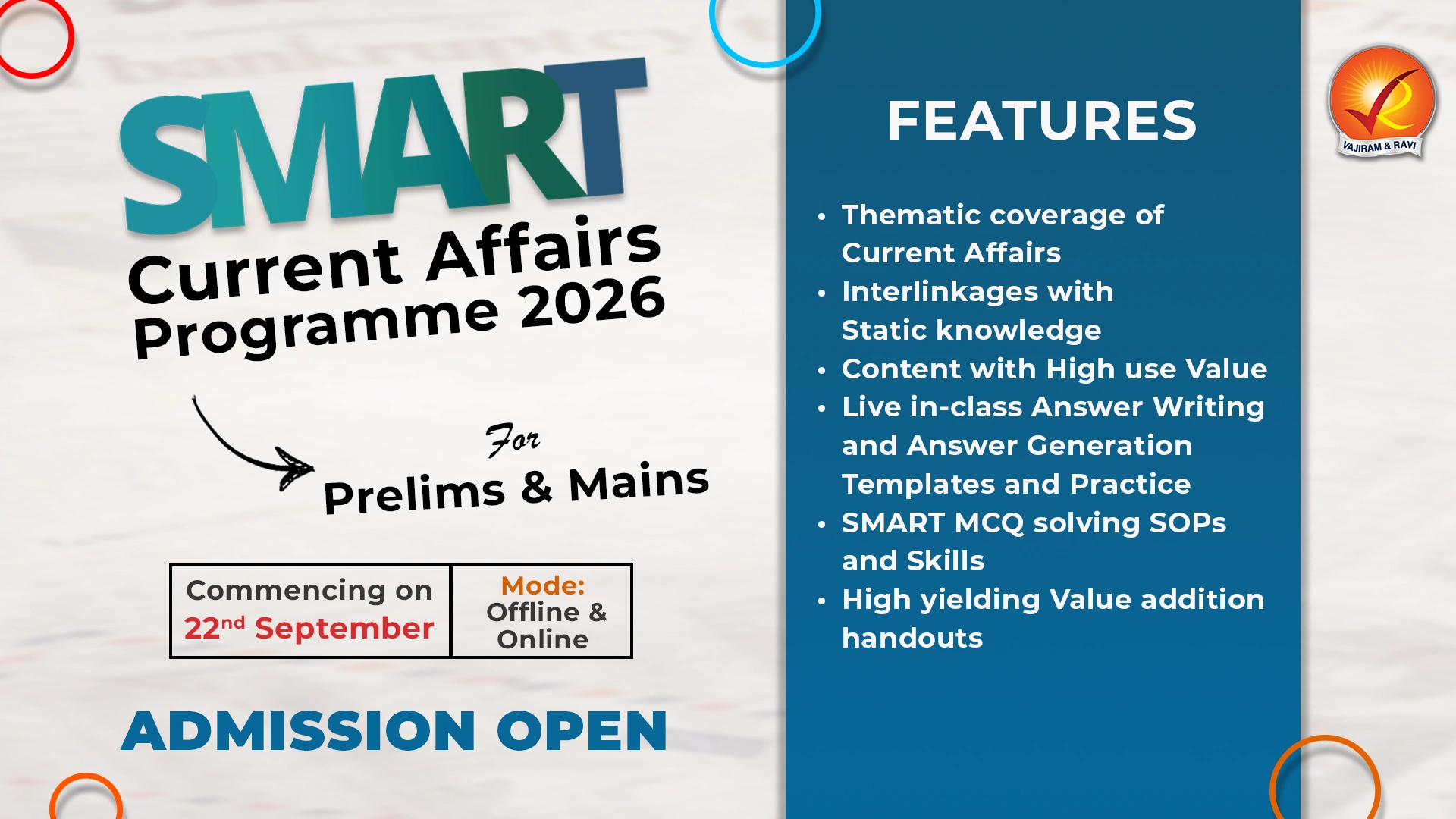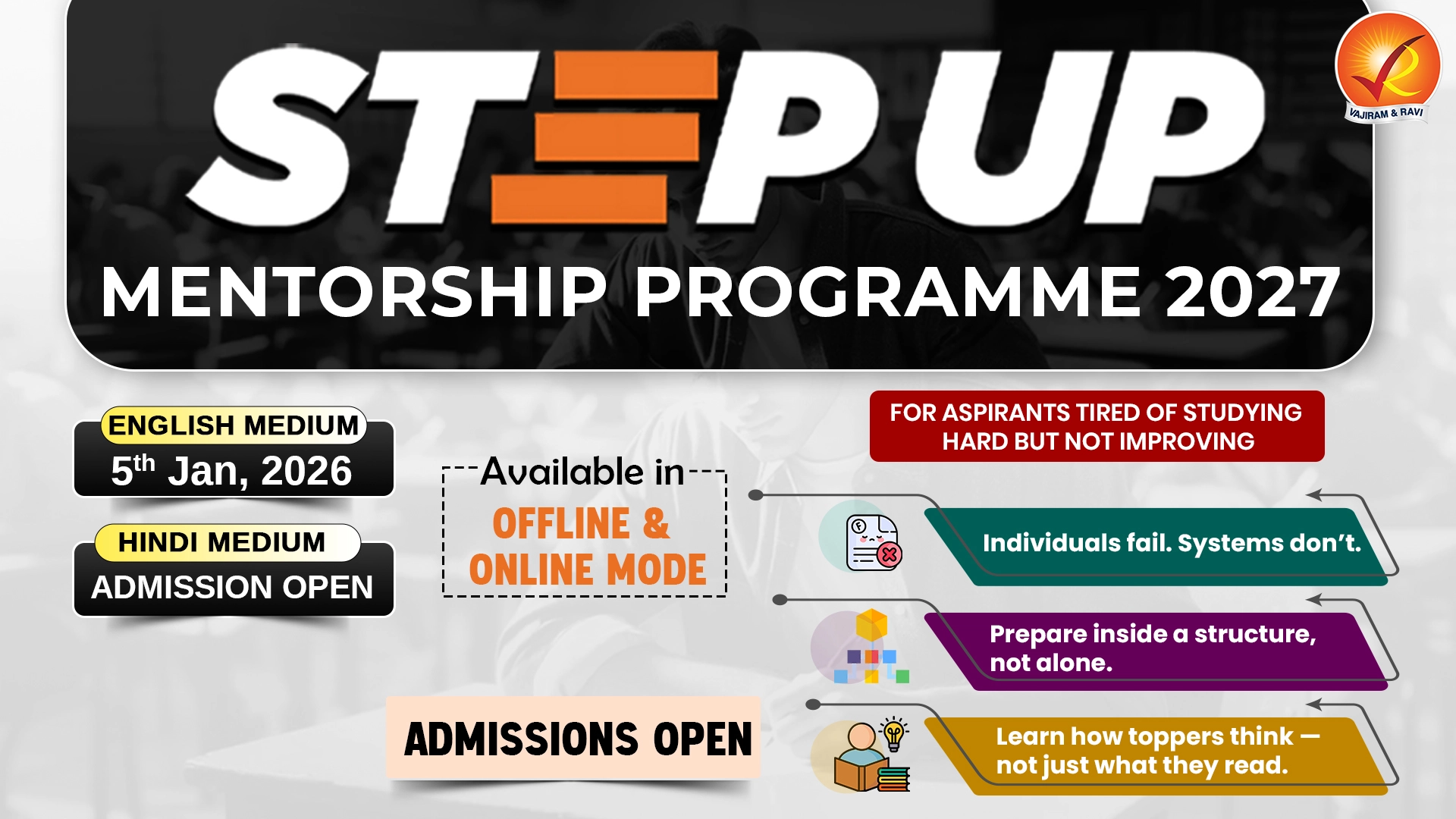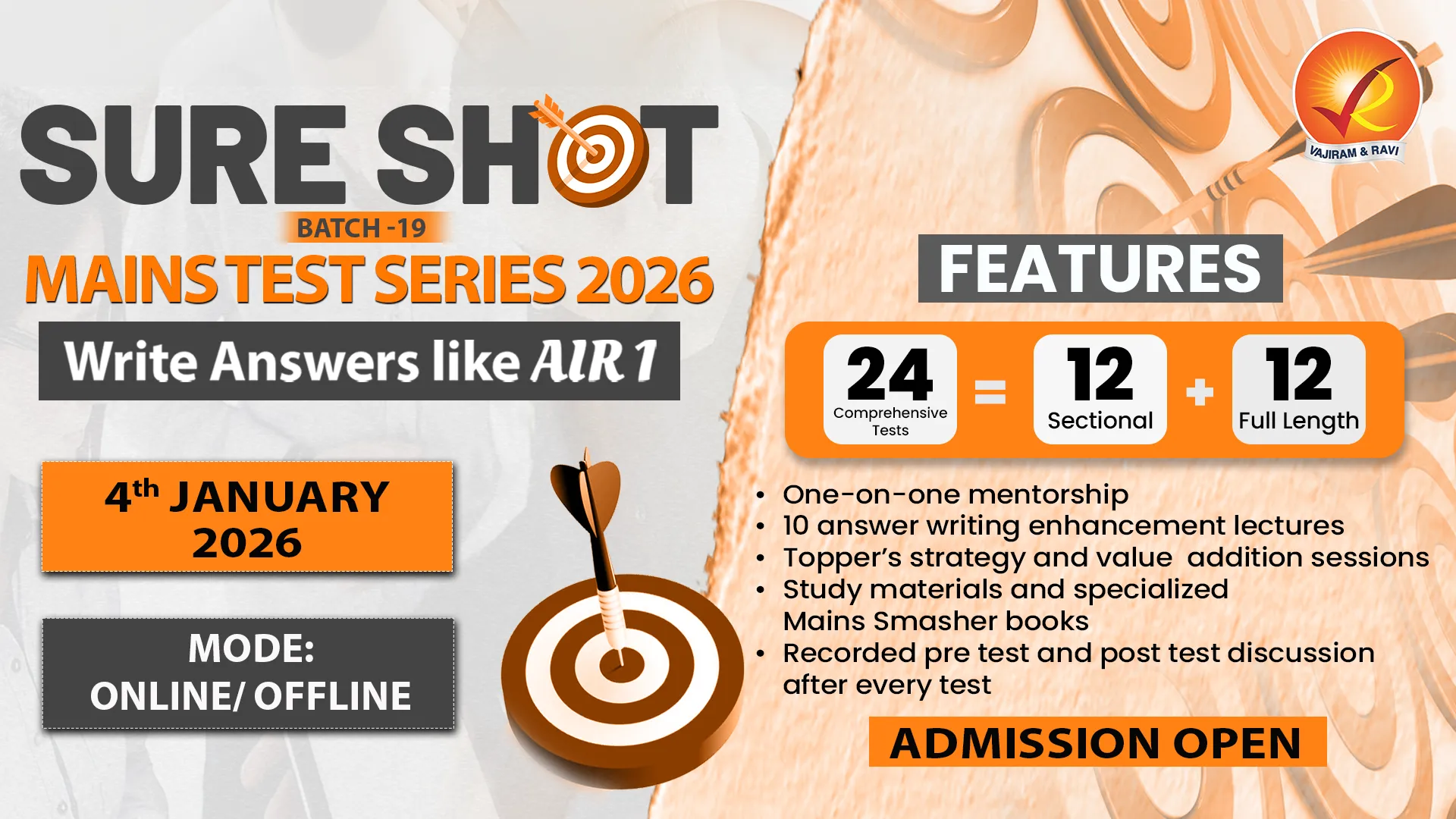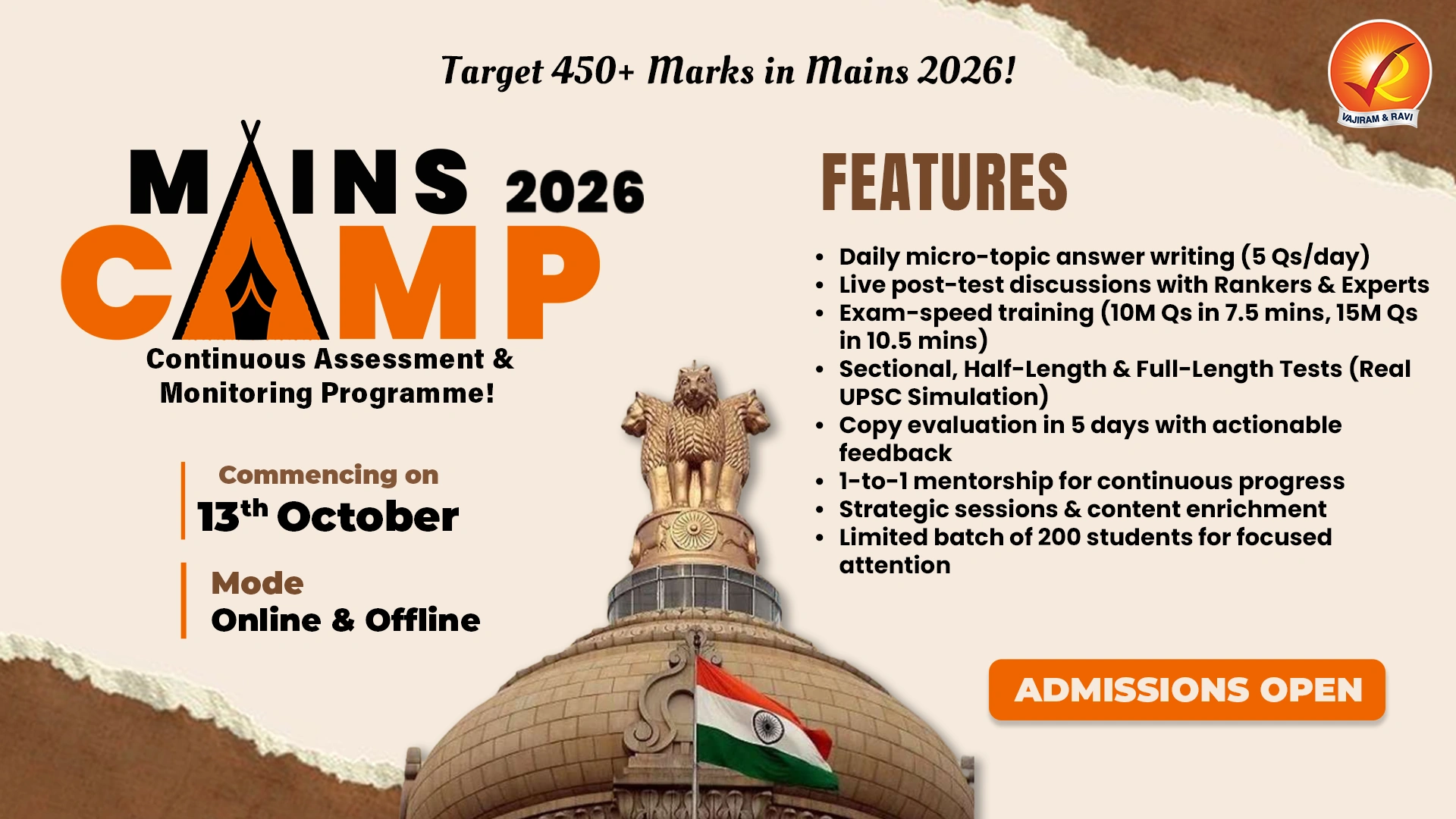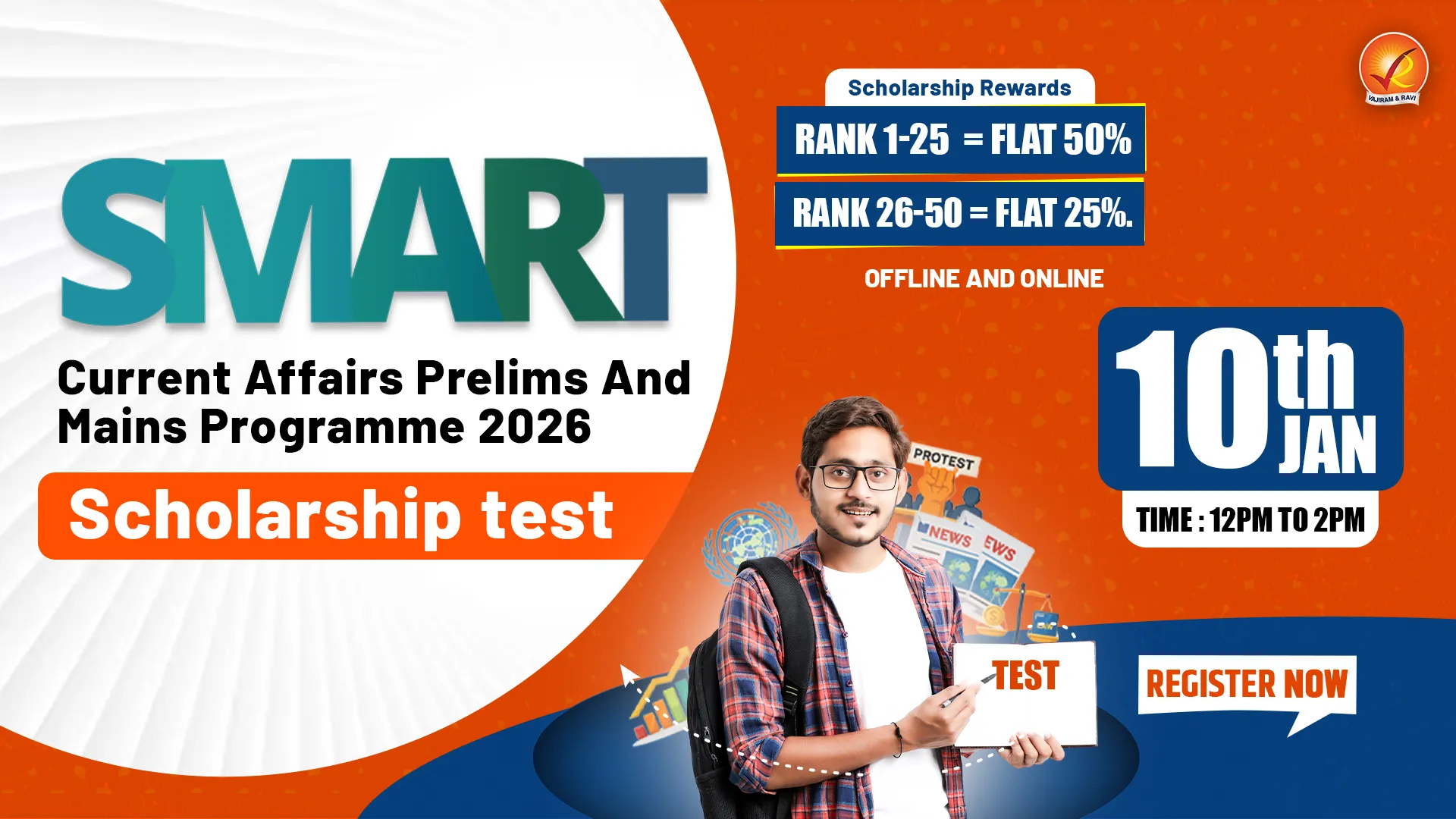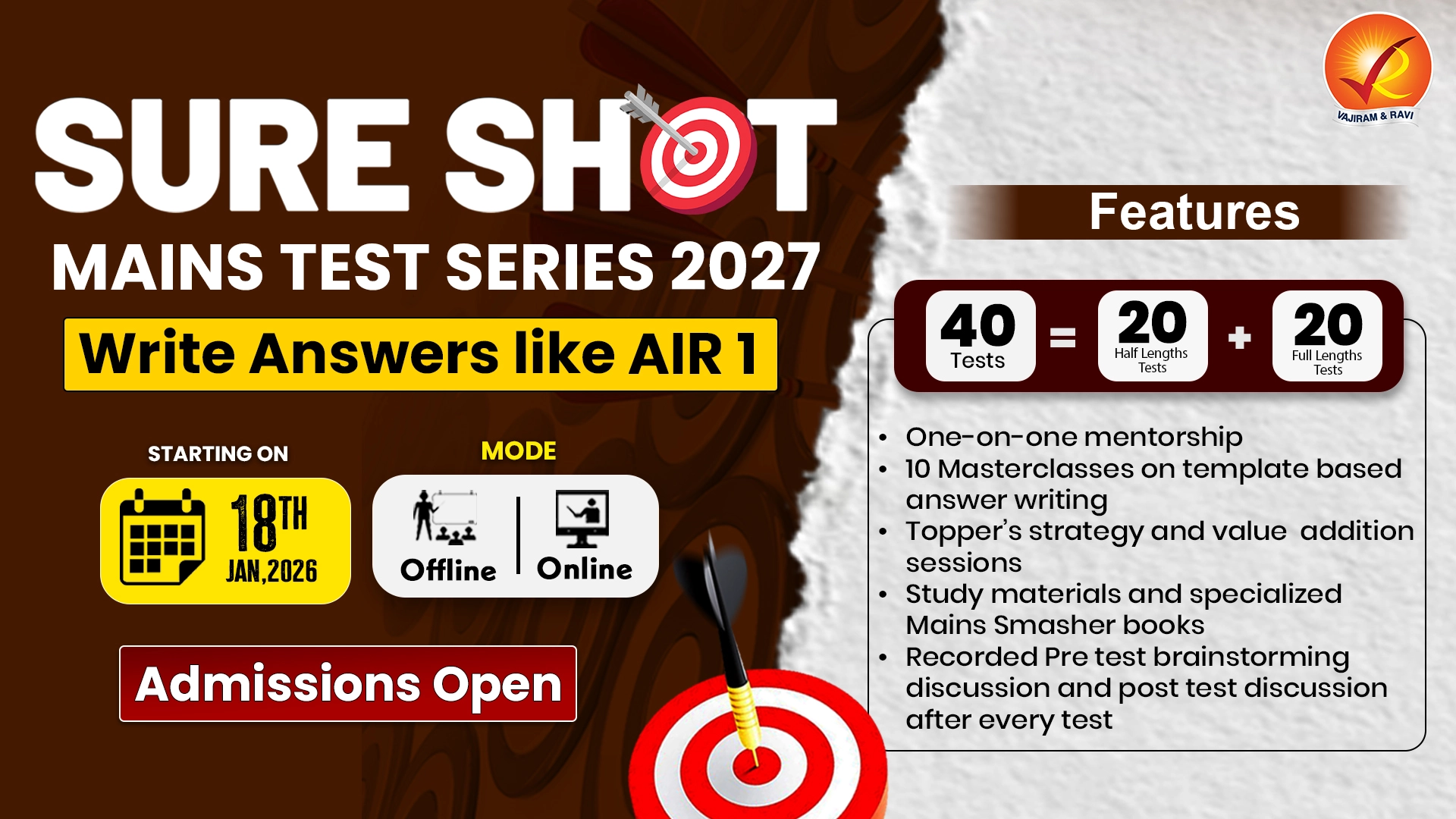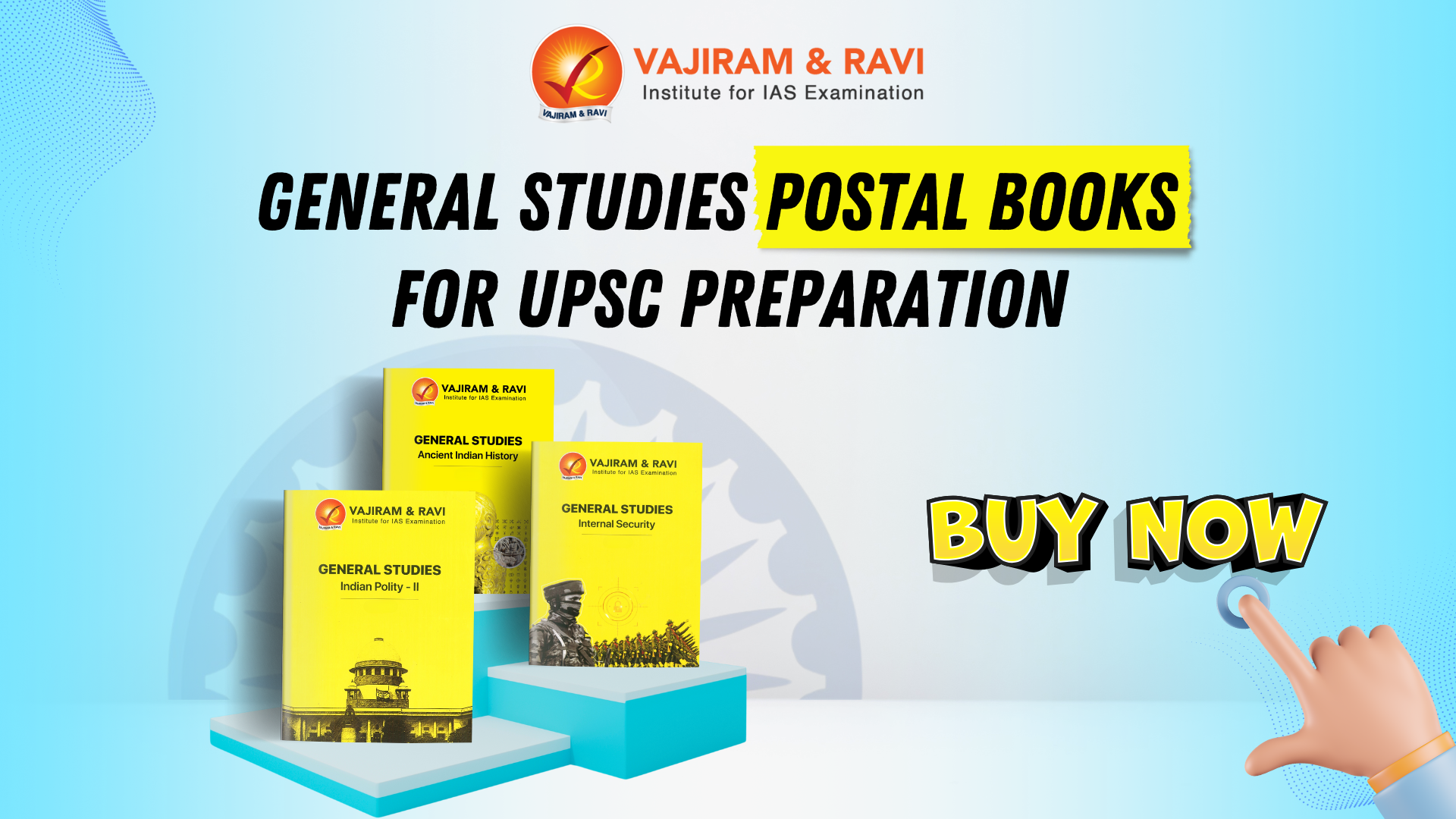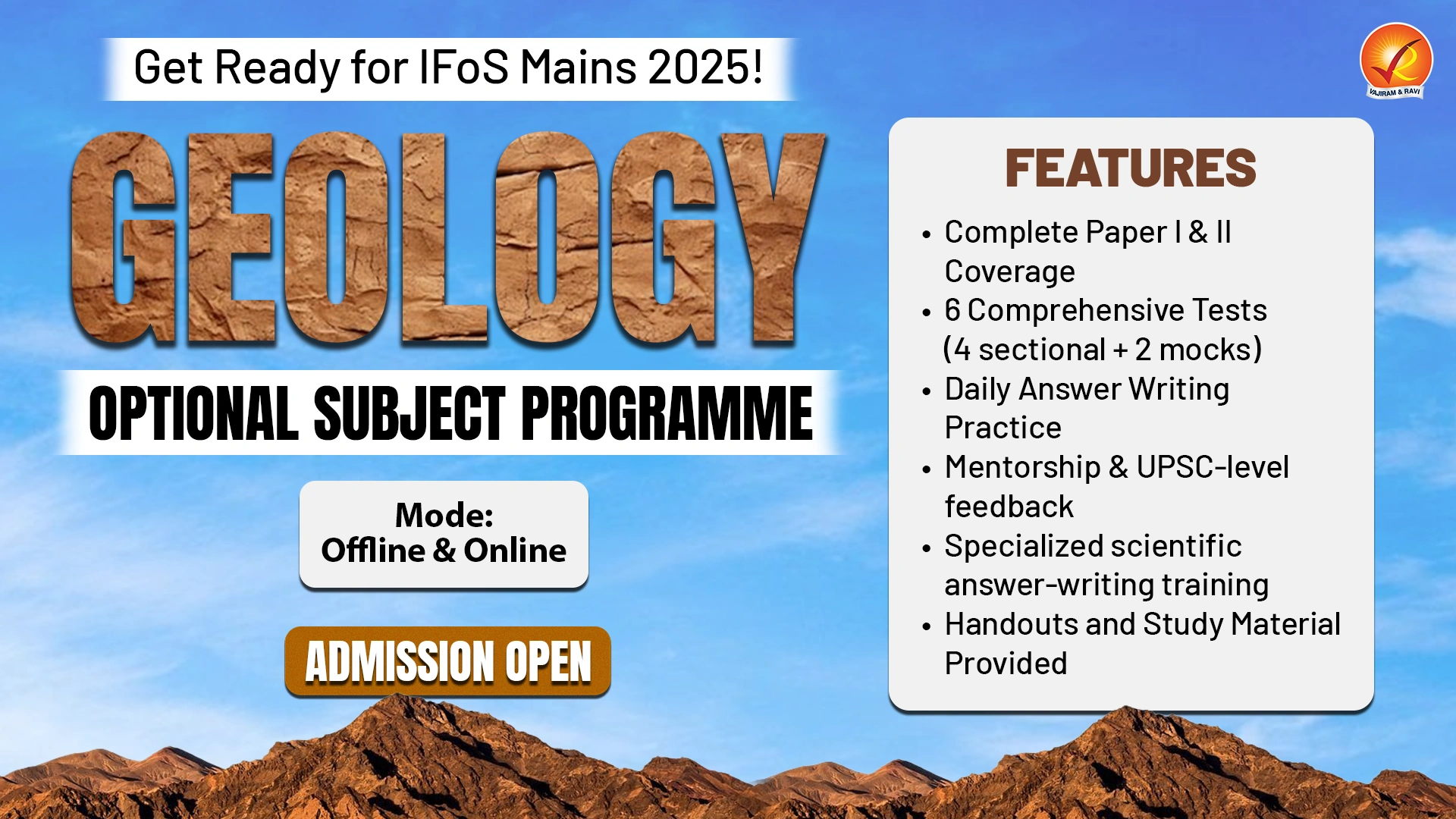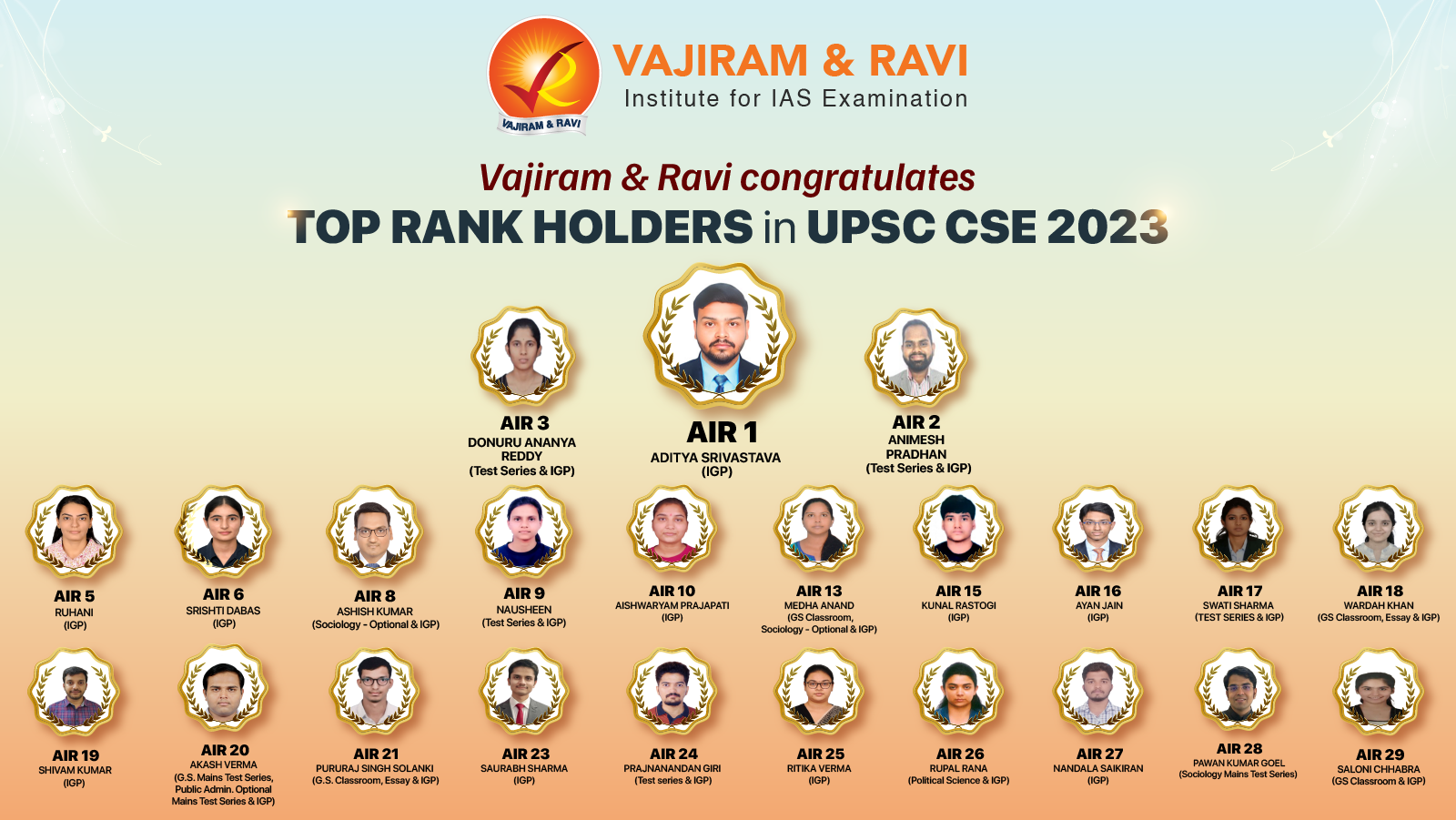Upcoming Mentoring Sessions
RMS - Economy - Industry, Infrastructure & Investment Models
RMS - Polity - DPSP & FD
RMS - Economy - Indian Agriculture - Part II
RMS - Geography - Rocks & Volcanoes and its landforms
RMS - Geography - Evolution of Oceans & Continents
RMS - Polity - Fundamental Rights - P1
RMS - Modern History - 1498 AD to 1757 AD
RMS - Modern History - 1858 AD to 1919 AD
RMS - Geography - Interior of the Earth & Geomorphic Processes
RMS - Geography - Universe and Earth and Basic concepts on Earth
RMS - Economy - Indian Agriculture - Part I
RMS - Economy - Fundamentals of the Indian Economy
RMS - Polity - Union & its territories and Citizenship
RMS - Polity - Constitution & its Salient Features and Preamble
Learning Support Session - ANSWER writing MASTER Session
Learning Support Session - How to Read Newspaper?
Mastering Art of writing Ethics Answers
Mastering Art of Writing Social Issues Answers
Answer Review Session
Mentoring Session - UPSC Form Filling
Mentoring Session (2024 - 25) - How to Write an ESSAY?
Social Issues Doubts and Mentoring Session
Ethics & Essay Doubts and Mentoring Session
Geography & Environment Doubts and Mentoring Session
History Doubts and Mentoring Session
Economy & Agriculture Doubts and Mentoring Session
Online Orientation Session
How to Read Newspaper and Make Notes?
Mains Support Programme 2025-(2)
Mains Support Programme 2025- (1)
Polity & International Relations Doubts and Mentoring Session
Mentoring Sessions (2024-25) - How to DO REVISION?
Learning Support Session - How to Start Preparation?
RMS - Geography - World Mapping
Prelims 2024 Strategy Session
Mentoring Session (2024-25) - How to Make Notes?
General Mentoring Session (GMS )
Mentoring Session (2025-26) - How to write an Answer?
Current Affairs
Jan. 11, 2026
What is the Indian Giant Squirrel?
During the ongoing All India Tiger Estimation 2026 survey, the Indian giant squirrel, Maharashtra’s state animal and locally known as Shekru, was recently sighted in the Atwan region of the Pune forest division.

About Indian Giant Squirrel:
- Also known as the Malabar Giant Squirrel, the Indian Giant Squirrel is a large rodent species native to India.
- More specifically, it is a type of tree squirrel.
- It is one of the largest squirrels in the world.
- Scientific Name: Ratufa indica
- Distribution:
- It is found primarily in the Western Ghats, Eastern Ghats, and Satpura Range.
- Their ranges include many states, including Karnataka, Andhra Pradesh, Madhya Pradesh, Gujarat, Chhattisgarh, Jharkhand, Maharashtra, Kerala, and Tamil Nadu.
- It is Maharashtra’s state animal and locally known as Shekru.
- Habitat: It is arboreal, spending most of its time in trees. It makes its shelter within holes in trees.
- Features:
- They are distinguishable by their striking, multi-colored hues.
- They are typically solitary animals, being seen only rarely in pairs during the breeding season.
- Conservation Status:
- IUCN Red List: Least Concern
Environment
Current Affairs
Jan. 11, 2026
What is Ethylene Glycol (EG)?
Telangana Drug Control Administration (DCA) recently issued a stop use notice for a batch of Almont-Kid Syrup contaminated with toxic Ethylene Glycol (EG).

About Ethylene Glycol (EG):
- It is a colorless, odorless, sweet-tasting, and water-soluble organic compound.
- It is usually produced by the reaction of ethylene oxide with water.
- It is the simplest member of the glycol family of organic compounds.
- Its chemical formula is C2H6O2, and it is a diol (a compound containing two hydroxyl groups).
- Applications:
- It has a wide range of other applications in industries such as automotive, manufacturing, chemical synthesis, and plastics production.
- It is primarily used as an antifreeze and coolant in automotive and industrial applications due to its ability to significantly lower the freezing point of liquids.
- It is used as an ingredient in hydraulic fluids, printing inks, and paint solvents.
- It is also used as a reagent in making polyesters, explosives, alkyd resins, and synthetic waxes.
- EG Poisoning?
- EG is highly poisonous; animals or humans that drink the solution become very ill and may die.
- Automotive antifreeze, containing 95% EG, is the most common source of EG poisoning.
Science & Tech
Current Affairs
Jan. 11, 2026
What is the Boeing E-4B Nightwatch?
Amid the high geopolitical tensions, Boeing E-4B Nightwatch, better known as the US military’s “Doomsday Plane,” made a rare appearance in Los Angeles, sparking panic.

About Boeing E-4B Nightwatch:
- The Boeing E-4B Nightwatch, widely known as the “Doomsday Plane”, is the most secretive aircraft in the US military’s arsenal.
- It serves as the National Airborne Operations Center and functions as a flying command post.
- It is designed to keep the US government operational during extreme scenarios such as nuclear war, catastrophic attacks on US soil, or the destruction of ground-based command centres.
- Its mission is to ensure the US government can continue to function even if “doomsday" arrives.
- It is a core component of the military’s Nuclear Command, Control, and Communications system, often referred to as NC3, which enables senior leaders to authorize and manage nuclear forces under all conditions.
- Features:
- It is built on a heavily modified Boeing 747-200
- The aircraft is hardened against electromagnetic pulse effects, shielded against nuclear and thermal radiation, and equipped with multiple layers of secure communications.
- The aircraft can remain airborne for extended periods using in-flight refuelling, allowing national leadership to operate independently of ground infrastructure.
Science & Tech
Current Affairs
Jan. 11, 2026
What are Aerosols?
A recent study found that water vapor heats the atmosphere much more than aerosols do.

About Aerosols:
- Aerosols refer to fine solid or liquid particles suspended in the atmosphere, where they reside typically for days to weeks before falling to the ground or being washed out by rain or snow.
- They arise both from human activities involving the burning of fossil fuels and biofuels, and from natural sources (such as desert dust, sea spray, and volcanic eruptions).
- Aerosol particles are tiny but numerous and often comprise a number of inorganic and organic substances.
- Visible forms of atmospheric aerosol plumes include smoke, smog, haze, and dust.
- How Do Aerosols Affect the Climate?
- Some of these particles can reflect incoming sunlight back to outer space, helping to cool the atmosphere.
- Other aerosol particles absorb heat from sunlight. This causes the atmosphere to warm.
- This is especially true for black carbon. Because it is black, it is very good at absorbing sunlight.
- Aerosols also have an impact on climate by acting as cloud condensation nuclei, which alters cloud properties and their radiative effects.
- Aerosol particles at surface level impact human health and are associated with disruption to transport (desert dust storms and volcanic eruptions) and can reduce the solar irradiance available for solar power plants.
- Aerosols contribute to poor air quality and harm human health.
- Aerosols that are smaller than 2.5 µm in median diameter penetrate deep into human lungs, leading to respiratory and other diseases and premature death from air pollution.
Environment
Current Affairs
Jan. 11, 2026
Exercise Sanjha Shakti
The Indian Army recently conducted exercise 'Sanjha Shakti', a joint Military–Civil Fusion exercise, at the Dighi Hills Range under the aegis of the Maharashtra, Gujarat and Goa Area of the Southern Command.

About Exercise Sanjha Shakti :
- It is a joint Military Civil Fusion (MCF) exercise.
- It was conducted at the Diggi Range, Khadki Military Station, under the aegis of the Maharashtra, Gujarat, and Goa Area of the Southern Command of the Indian Army.
- The exercise focused on strengthening coordination between the armed forces and civilian agencies to deal with complex security challenges and emergency situations.
- The drill brought together personnel from the Indian Army and key civilian agencies, including the Maharashtra Police, Force One, and fire and emergency services.
- The joint exercise tested interoperability, communication protocols, decision-making processes, and rapid response mechanisms through realistic, mission-oriented scenarios.
- The exercise validated seamless coordination between civil and military stakeholders, particularly in situations involving disaster response and public safety.
Polity & Governance
Current Affairs
Jan. 11, 2026
Kathputli
In Jaipur nearly 250 families carry forward one of Rajasthan’s oldest folk art forms, Kathputli.

About Kathputli:
- Kathputlis is a traditional string puppet play from Rajasthan.
- It is one of Rajasthan’s oldest folk art forms.
- Historically, Kathputli performances were used by travelling performers to narrate tales of Rajput kings, brave warriors, folk heroes, and moral stories to village audiences.
- The name comes from kath(wood) and putli (doll), reflecting their simple yet expressive construction.
- A kathaputli is made up of wood, cloth, thread, and metal wire. Its upper body is made up of wood, and the rest is made of cotton and fabric.
- They do not have legs and are covered with long trailing skirts.
- The puppeteer manipulates them with his fingers tied with two to five strings.
- Features of Kathputli:
- They possess distinctive facial features like large eyes, oval faces, large lips, and arched eyebrows.
- Their colourful attire draw inspiration from royal courts and desert traditions, while their sharp features and exaggerated expressions add drama to every movement.
- Theme: Each puppet represents a character from everyday life or folklore.
- It is accompanied by folk music on the dholak and
- The performances brim with humour, music, and satire, often reflecting social realities alongside legendary tales.
Art and Culture
Current Affairs
Jan. 11, 2026
Phayre's Leaf Monkey
Recently, it was found that rapid habitat destruction forces arboreal Phayre’s leaf monkey to alter its habits.

About Phayre's Leaf Monkey:
- Phayre's Leaf monkey (Trachypithecus phayrei) is a species of Old World monkey which is diurnal and arboreal.
- Habitat: It inhabits tropical, deciduous, and evergreen forests and can also be seen in bamboo clusters and rubber plantations.
- Distribution: It is found in North-East India (mainly found in Tripura, Assam and Mizoram), Eastern Bangladesh, and Western Myanmar.
- Diet: It feeds primarily on young leaves, shoots, and flowers, occasionally consuming fruits and seeds.
- Behavior: Phayre's leaf monkeys are very shy and typically flee when threatened. They spend over 75% of their time feeding within tree tops.
- It’s specialised multi-chambered stomach enables it to digest fibrous leaves efficiently, contributing to nutrient cycling and seed dispersal in the ecosystem.
- Threats: Habitat loss, forest fragmentation and hunting.
- Conservation Status:
- IUCN Red List: Endangered
- CITES: Appendix II
Source : Ringed Eyes in the Canopy
Environment
Current Affairs
Jan. 11, 2026
Vehicle-To-Vehicle Communication Technology
The Government of India is preparing to roll out Vehicle-to-Vehicle (V2V) communication technology by end of 2026.

About Vehicle-To-Vehicle Communication Technology:
- It is defined as a direct communication method that allows vehicles to exchange information with one another.
- It enhances driver awareness of their surroundings through wireless technologies.
- It allows vehicles to communicate directly with each other without the need for a network.
- The initiative aims to strengthen road safety and reduce accidents across the country.
- Functioning: The system will function through a device similar to a SIM card, which will be installed in vehicles.
- Features of Vehicle-To-Vehicle Communication Technology:
- Vehicles will receive real-time alerts when another vehicle comes too close from any direction.
- Each vehicle equipped with V2V technology continuously broadcasts and receives data such as speed, location, direction, acceleration and braking status.
- When a potential risk is detected, the system alerts the driver, giving them extra time to react.
- The technology will provide alerts related to safe vehicle distance and will also warn drivers about nearby roadside or stationary vehicles.
- The system will provide signals from all sides of the vehicle, ensuring 360-degree communication.
- It will work in coordination with Advanced Driver Assistance Systems (ADAS).
- Advantage: This feature will be extremely useful during foggy conditions when visibility between vehicles drops to almost zero.
Science & Tech
Current Affairs
Jan. 11, 2026
Narco-Coordination Centre
Recently, the Union Home Minister chaired the 9th Apex-Level Meeting of the Narco-Coordination Centre (NCORD) at Vigyan Bhawan in New Delhi.

About Narco-Coordination Centre:
- The Narco-Coordination Centre (NCORD) mechanism was established in 2016 for better coordination between States and Ministry of Home Affairs.
- It has been further strengthened through a four-tier system.
- Purpose: To enhance coordination between the States, the Ministry of Home Affairs and concerned stakeholders in addressing the challenge of the drug menace in a holistic manner.
- It is designed to facilitate better communication, cooperation, and intelligence sharing among law enforcement and drug control agencies.
- Structure of Narco-Coordination Centre (NCORD):
- Apex Level NCORD Committee, headed by Union Home Secretary;
- Executive Level NCORD Committee, headed by Special Secretary, Ministry of Home Affairs;
- State Level NCORD Committees, headed by Chief Secretaries; and
- District Level NCORD Committees – headed by District Magistrates
- Initiatives linked to NCORD:
- The NCORD portal has been launched as an effective mechanism for information exchange between various institutions/agencies.
- A toll-free helpline called MANAS (Madak Padarth Nishedh Asuchna Kendra) with the number 1933 has been launched.
Polity & Governance


